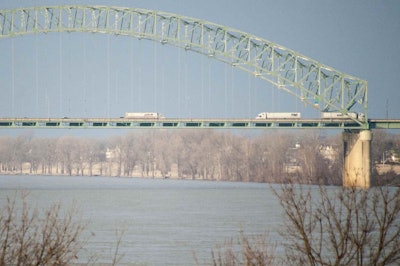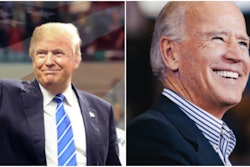Those of you driving hundreds of miles a day aren’t surprised by the occasional dismal report on the condition of the nation’s highways. The depressing details can be seen in this report from the American Society of Civil Engineers or this report on state highways by the Reason Foundation. One ray of hope here was Donald Trump’s campaign pledge for a $1 trillion infrastructure initiative. Instead, it looks like Trump’s spending legacy will center not on infrastructure, but on one five-sided structure in Washington, D.C.
 Trump’s promise for a huge infrastructure program has languished since a plan was announced early this year. Defense spending plans, though, are at a record level.
Trump’s promise for a huge infrastructure program has languished since a plan was announced early this year. Defense spending plans, though, are at a record level.When I wrote in February about President Trump’s failure to deliver on infrastructure spending promises, many observers had doubts about the plan he had just announced. It was 50 percent bigger than the pledge, but the $1.5 trillion total depended on matching funds from investors and state and local governments. With his plan for only $200 billion in federal contributions and questionable assumptions about the willingness of partners to embrace it, it went nowhere. It didn’t help its reception within trucking that the plan called for tolling increases.
Then in April, the point man on Trump’s infrastructure bill, DJ Gribbin, announced he was leaving. That news came shortly after Trump admitted his infrastructure proposal would likely see no action the rest of the year.

“We probably have to wait until after the election because the Democrats say, ‘Don’t give him any more wins,'” Trump said at an event, which sounded like a lame excuse. If the plan appeared challenging while Republicans control both houses of Congress, why wait till after mid-terms, when there’s a fair chance that Democrats could take the House?
A New York magazine piece cited the year-end tax bill as dealing “the fatal blow to infrastructure.” With the tax cut, “the deficit soared, and Republicans, following the familiar script, had to start complaining about excessive spending in order to deflect blame for the deficit from their beloved tax cut.” A debt-financed infrastructure bill at that point became a no-go.
Ironically, Bloomberg Businessweek reports that even before Trump announced his plan early this year, money was pouring into funds dedicated to private-public infrastructure projects.
“The total assets under management in infrastructure funds had ballooned to $450 billion at the end of 2017, from just $7 billion in 2000, according to data provider Preqin,” reports Bloomberg. “But there’s a big disconnect between capital raised and actual dealmaking. During the second quarter, global infrastructure deals fell to $49 billion, their lowest quarterly level in five years, according to Preqin.”
Given the awkwardness of public-private projects – the politics, bureaucracy, waste and delays common to all things governmental – potential private investors in infrastructure are not going to wait for stars to align while their billions get a zero rate of return. There are other things to invest in.
Some observers believe states and local governments need to take more responsibility to make public-private deals come to fruition. There’s been plenty of precedent for that the last few decades as states have funded highway improvements while the Highway Trust Fund, crippled by an outdated fuel-tax formula, dwindles in the face of congressional cowardice to fix it.
So given the minimal federal commitment to infrastructure, Trump’s loss of interest in championing the cause, and the lack of initiative in Congress to fix the Highway Trust Fund, it looks like what states don’t take care of won’t get done.
Meanwhile, Trump and Congress have seen eye to eye on one big spending spree: defense. The $1.3 trillion spending bill Trump signed in March included $700 billion for defense. It was “the largest military budget in history, reversing years of decline,” said the Department of Defense.
The Pentagon is on track to get more than $6 trillion over the next decade, reports The Nation. That “10-year figure represents more than 30 times as much direct spending as the president’s $200 billion infrastructure plan.”
Maybe now’s the time for owner-operators to jump through the hoops and get clearance for those high-dollar DoD loads. Looks like lots of war hardware manufacturing in the works for years to come.












